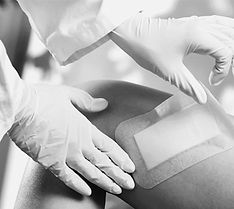Advanced infection control in wound care involves implementing strategies and practices to prevent and manage infections in wounds. Here are some key aspects of advanced infection control in wound care:
Hand Hygiene: Proper hand hygiene is crucial in preventing the spread of infection. Healthcare professionals should wash their hands thoroughly with soap and water or use alcohol-based hand sanitizers before and after every wound care procedure.
Personal Protective Equipment (PPE): Healthcare professionals should wear appropriate PPE, such as gloves, masks, gowns, and eye protection, to protect themselves and the patient from potential infection.
Wound Cleaning and Irrigation: Thoroughly cleaning and irrigating the wound with sterile solutions helps remove debris, bacteria, and other contaminants. This process promotes wound healing and reduces the risk of infection.
Antibiotic Stewardship: Proper use of antibiotics is essential to prevent antibiotic resistance. Healthcare professionals should follow evidence-based guidelines for antibiotic selection, dosage, and duration of treatment.
Wound Dressings: Selecting appropriate wound dressings plays a significant role in infection control. Dressings should maintain a moist environment, protect the wound from contamination, and facilitate healing. Antimicrobial dressings may be used in specific cases.
Biofilm Management: Biofilms are communities of bacteria that form on wound surfaces and can contribute to chronic wound infections. Strategies such as debridement, antimicrobial agents, and biofilm disruptors may be used to manage biofilms.
Controlling Exudate: Effective management of wound exudate helps prevent maceration and infection. Using appropriate absorbent dressings and implementing techniques like negative pressure wound therapy (NPWT) can help control exudate levels.
Patient Education: Educating patients and their caregivers about wound care, hygiene, and signs of infection is crucial. Patients should be aware of proper wound dressing techniques, when to seek medical attention, and how to prevent contamination.
Environmental Control: Maintaining a clean and hygienic environment is essential in preventing wound infections. Regular cleaning and disinfection of surfaces, proper waste disposal, and adherence to infection control protocols are essential.
Collaboration and Communication: Infection control in wound care requires collaboration among healthcare professionals, including physicians, nurses, wound care specialists, and infection control practitioners. Effective communication and adherence to protocols ensure comprehensive and coordinated care.
It's important to note that advanced infection control practices should be guided by evidence-based guidelines, local protocols, and individual patient assessment. Healthcare professionals should stay updated with the latest research and recommendations in wound care to provide optimal care and prevent infections.
 CONTINUING MEDICAL EDUCATION
CONTINUING MEDICAL EDUCATION
 CONTINUING MEDICAL EDUCATION
CONTINUING MEDICAL EDUCATION





